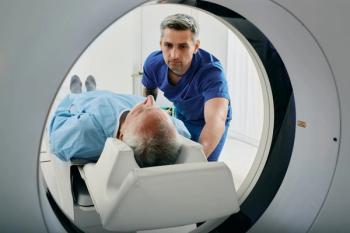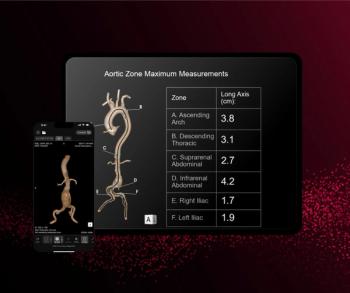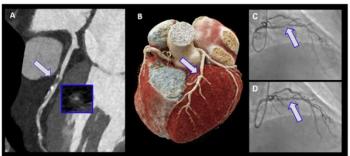
Du Pont eyes Cardiolite's potentialin nuclear medicine breast imaging
Technique may expand modality's applicationsTechnological advances in nuclear medicine are having an unexpectedeffect on radiopharmaceutical vendors. As the specialty becomesmore accurate in targeting specific disease states, the potentialpayoff
Technique may expand modality's applications
Technological advances in nuclear medicine are having an unexpectedeffect on radiopharmaceutical vendors. As the specialty becomesmore accurate in targeting specific disease states, the potentialpayoff for new radiopharmaceutical introductions drops. Futureradiopharmaceutical releases are less likely to be blockbusteragents with broad applications. Instead, new products will targetspecific pathologies, providing high diagnostic value for physiciansbut modest financial returns for radiopharmaceutical companies.
One solution to the dilemma is to find new applications for nuclearmedicine, an effort Du Pont Merck Pharmaceutical is helping tospearhead. The North Billerica, MA, company is sponsoring theClinical Trial for Sestamibi Protocol, a multicenter study toexamine the utility of breast imaging using its Cardiolite technetium-basedcardiac imaging agent.
Breast imaging with technetium sestamibi burst on the nationalscene at last year's Radiological Society of North America meeting,when a group led by Dr. Iraj Khalkhali of Harbor-UCLA MedicalCenter in Torrance, CA, presented its work on the technique. Thegroup's findings received nationwide attention, with articlesappearing in both clinical and consumer publications.
Interest in scintimammography has grown since then. The techniquewas easily the hottest clinical topic at the Society of NuclearMedicine meeting in Minneapolis in June (SCAN 7/6/95). Khalkhalireprised his RSNA presentation by describing further progressin scintimammography, while a group of nuclear medicine physiciansfrom the Instituto Nazionale Tumori in Naples, Italy, presentedits work on the subject. A group from the Technische Universitatin Munich, Germany, described breast imaging with PET.
The U.S. and Italian researchers are using Cardiolite to differentiatemalignant from benign breast lesions. They hope that scintimammographycan reduce some unnecessary biopsies in patients who have suspiciousmammograms but who are not clear candidates for biopsy.
Candidates for a scintimammography test include women with densebreasts, lumpy breasts, scar tissue from previous biopsies orother factors that might make follow-up imaging with standardmammography difficult. The technique is not intended to replacemammography or biopsy.
In his presentation at the SNM conference, Khalkhali's groupcompared scintimammography with mammography in 48 women with densebreasts and suspected breast cancer. The group reported that scintimammographycorrectly identified 15 of 16 malignant breast tumors and gavean accurate negative result for 29 of 32 benign lesions. Mammographydetected a total of 30 lesions (of which 13 were malignant and17 benign) and failed to detect 18 lesions (of which three weremalignant and 15 benign).
"Mammography is an excellent screening procedure. It isthe best we have," Khalkhali said. "But once we detecta lesion by mammography, it is very difficult to characterizeit and differentiate a benign from malignant lesion. For lesionsthat we see on mammograms that are not highly suspicious or arenot low probability (of cancer), you'd like to have another, better,specific test so that you don't have to biopsy them."
From a device perspective, scintimammography requires somemodifications to existing gamma cameras. A special table mustbe used that allows the patient's breasts to be imaged while inthe prone position, and several vendors have developed such tables.
Equipment vendors are also beginning to develop other devicesoptimized for breast imaging. For example, Khalkhali's group isworking with Digirad of San Diego, which is developing a solid-statedigital gamma camera with a small detector head that would beoptimal for breast imaging.
In addition, North American Scientific of North Hollywood, CA,has developed a special localizing needle for use during scintimammographyprocedures. The needle has a wire inside to which a cobalt-57radioactive source has been welded for localizing lesions. Thesource allows nuclear medicine physicians to accurately placea standard mammography hook wire to mark the lesion before thepatient goes to surgery, Khalkhali said.
Du Pont's study. To investigate the potential of technetium sestamibibreast imaging, Du Pont has lined up some 50 institutions, whichhave enrolled about 600 patients. Patient accrual has been completedand Du Pont is in the process of collecting the data and beginningits analysis, according to Du Pont Merck president Kenneth Kasses.
If the trials indicate that scintimammography with Cardioliteis useful, Du Pont will use the data to submit a supplement toCardiolite's new drug application (NDA) that will allow the companyto market the radiopharmaceutical for breast imaging. Du Ponthopes to have the NDA supplement filed with the Food and DrugAdministration by the end of this year, Kasses said.
Du Pont's work with breast imaging comes amid signs of a slowdownin the strong growth rates the nuclear cardiac imaging markethas enjoyed in the past several years. The growth rate for procedurevolume in nuclear cardiology this year is about 4% to 5%, somewhatlower than in previous years, Kasses said.
As nuclear medicine's star application shows signs of age, thespecialty badly needs another radiopharmaceutical success storyto justify the R&D expenditures drug companies are making.Two recent products, Cytogen's OncoScint and Mallinckrodt Medical'sOctreoscan, were expected to be blockbuster introductions buttheir sales performance has been disappointing to some.
"The adoption of (new products) is much less rapid thanwe think is necessary and critical to a vital field," Kassessaid. "I think overall that the industry is committed tonew product development. But you have to wonder sometimes."
Newsletter
Stay at the forefront of radiology with the Diagnostic Imaging newsletter, delivering the latest news, clinical insights, and imaging advancements for today’s radiologists.



























